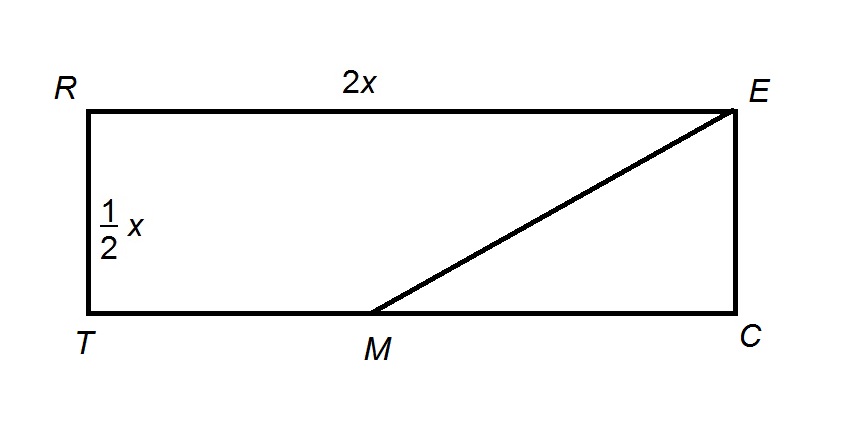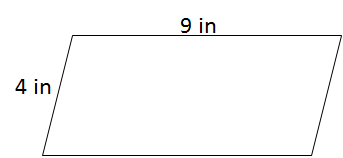All ISEE Middle Level Math Resources
Example Questions
Example Question #261 : Geometry
A trapezoid has a height of 


Use the following formula, with 
Example Question #261 : Plane Geometry
Find the area of a trapezoid with bases equal to 7 and 9 and height is 2.
To solve, simply use the formula for the area of a trapezoid.
Thus,
Example Question #1 : How To Find The Area Of A Trapezoid
Find the area of a trapezoid with bases of 10 centimeters and 8 centimeters, and a height of 4 centimeters.
The formula for area of a trapezoid is:
where
therefore the area equation becomes,
Example Question #6 : How To Find The Area Of A Trapezoid
You recently bought a new bookshelf with a base in the shape of an isosceles trapezoid. If the small base is 2 feet, the large base is 3 feet, and the depth is 8 inches, what is the area of the base of your new bookshelf?
Cannot be determined from the information provided.
You recently bought a new bookshelf with a base in the shape of an isosceles trapezoid. If the small base is 2 feet, the large base is 3 feet, and the depth is 8 inches, what is the area of the base of your new bookshelf?
To find the area of a trapezoid, we need to use the following formula:
Where a and b are the lengths of the bases, and h is the perpendicular distance from one base to another.
We are given a and b, and then h will be the same as our depth. The tricky part is realizing that our depth is in inches, while our base lengths are in feet. We need to convert 8 inches to feet:
Next, plug it all into our equation up above.
So our answer is:
Example Question #7 : How To Find The Area Of A Trapezoid

The above diagram shows Rectangle 


The area of Quadrilateral 


The easiest way to see this problem is to note that Quadrilateral 


The area of Rectangle 





its area is half their product, or
The area of Quadrilateral 

Example Question #112 : Geometry
The perimeter of the following trapezoid is equal to 23 cm. Solve for 
The perimeter is equal to the sum of all of the sides.
Example Question #41 : Geometry
Find the perimeter of the trapezoid:
The perimeter of any shape is equal to the sum of the lengths of its sides:
Example Question #1 : How To Find The Perimeter Of A Trapezoid
You recently bought a new bookshelf with a base in the shape of an isosceles trapezoid. If the small base is 2 feet, the large base is 3 feet, and the arms are 1.5 feet, what is the perimeter of the base of your new bookshelf?
Cannot be determined from the information provided.
You recently bought a new bookshelf with a base in the shape of an isosceles trapezoid. If the small base is 2 feet, the large base is 3 feet, and the arms are 1.5 feet, what is the perimeter of the base of your new bookshelf?
To find the perimeter of a bookshelf, we need to add up the lengths of the sides.
We know the two bases, we just need to add the lengths of the arms.
So, our answer is 8ft
Example Question #172 : Quadrilaterals
18 in
36 in
13 in
26 in
26 in
To find the perimeter of a parallelogram, add the lengths of the sides. Opposite sides of a parallelogram are equivalent.
Example Question #2091 : Isee Middle Level (Grades 7 8) Mathematics Achievement
If the perimter of a parallelogram is 

The answer cannot be found
The perimeter of a parallelogram is found by adding up all four sides.
Since there are two pairs of side with equal lengths, two sides must have a length of 
So the perimeter would be


To find the value of the other side length, you would divide the remaining perimeter not include in the other sides by 
So 
That means the other side length would be 
Certified Tutor
Certified Tutor
All ISEE Middle Level Math Resources





































































